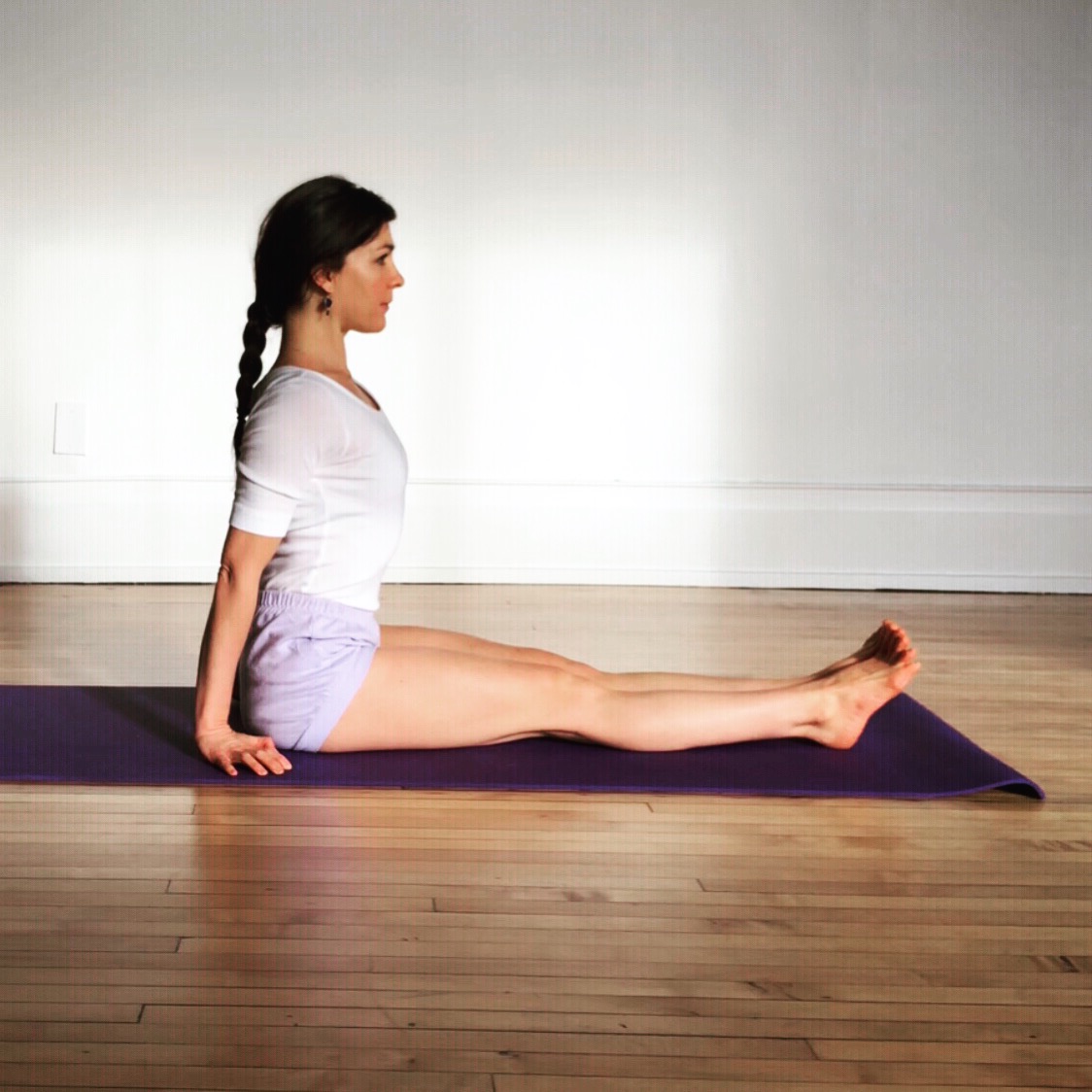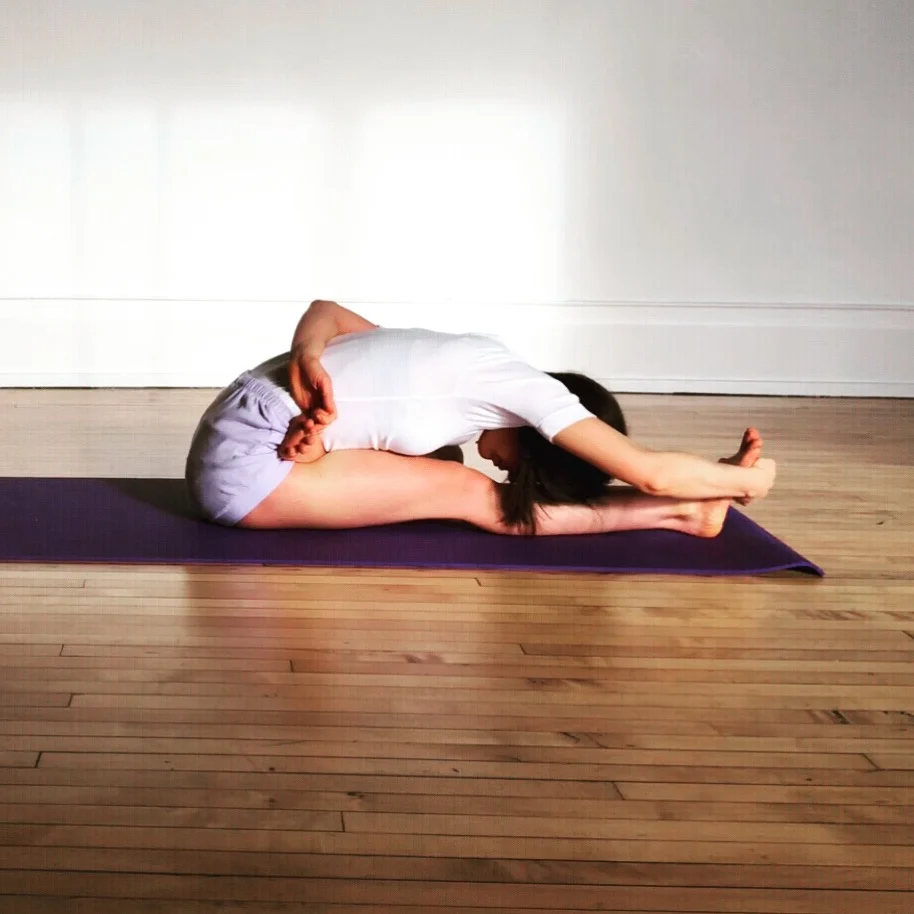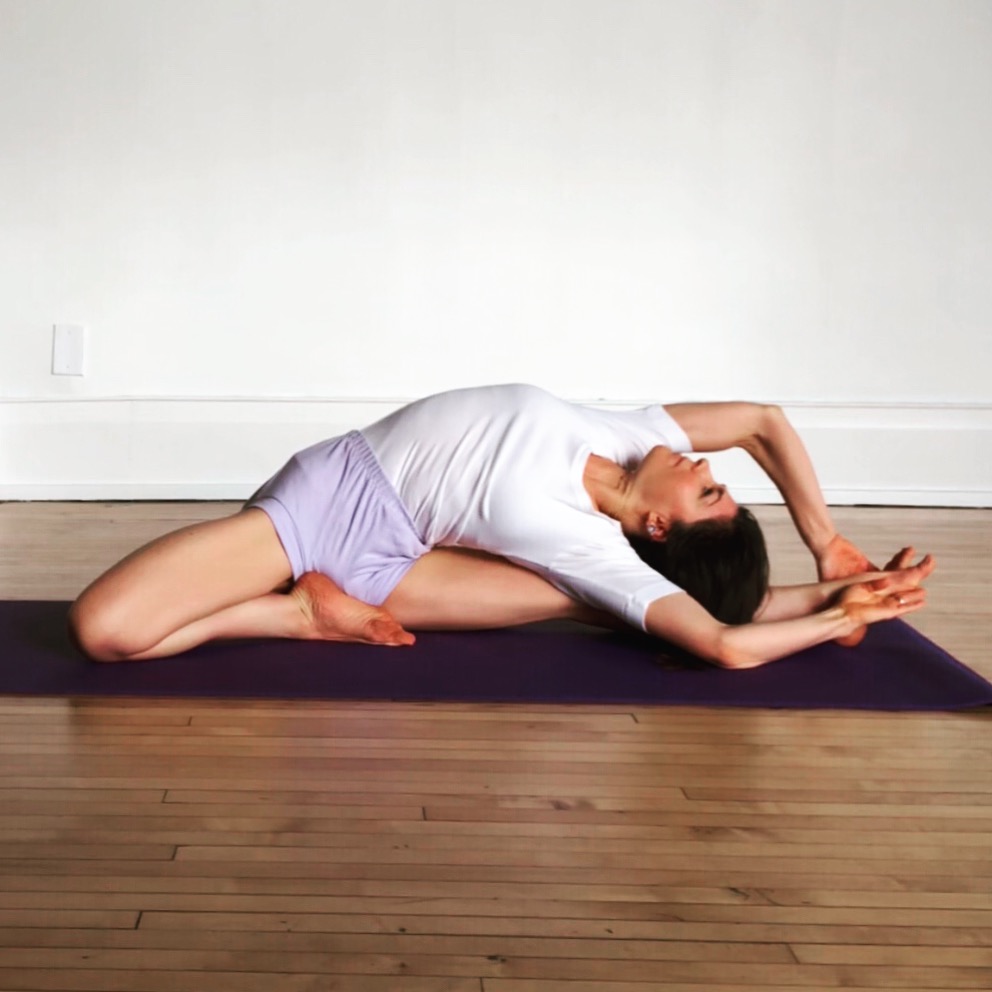First and foremost, I am a yoga practitioner in the lineage of Yogācārya B.K.S. Iyengar, as a student of his student, Mr. Manouso Manos. I do not let my practice go unkindled. This is the most valuable gift I can give my students. This human body is a laboratory for learning. This is the most valuable gift I can give my students. I have practiced from states of despair, in anxiety, in agonizing pain of injury, in illnesses, through cycles and fluctuations of hormones and seasons, in pregnancy, in childbirth, after childbirth, in nausea, in irritation, in anger, in cold, in heat, in over-stimulation, in exhaustion and distraction, in fear, in ambition, in depression, in imbalance of all kinds, for twenty years. I use practice to solve my problems. Practice is the means to find balance and to find transcendence from these changing states--this is Yoga.
I continue to be a student. I ask my teacher questions when confronted with cases outside my experience, and he answers from his experience as a yoga practitioner of over forty years, his studentship with Yogācārya B.K.S. Iyengar, including assisting in his medical yoga classes for decades, and from his long teaching career. Soon I head to the Abode of Iyengar Yoga in San Francisco, to attend or assist my teacher's public classes and the March Intensive. This will be the 21st week-long intensive since I began to study with him over fifteen years ago.
Last year, the International Association of Yoga Therapists granted me a certificate in Yoga Therapeutics, based on the thousands of hours of training and practical experience that I already have as a Certified Iyengar Yoga Teacher. As students of Iyengar Yoga, we are learning how to care for our problems, pains, and conditions from the very first classes. Yoga is intrinsically healing. Yoga teaches what to do and not do, based on the present conditions. It teaches how to become free from afflictions. "Yoga is about doing the right thing at the right time," as my teacher, Manouso has often said. While relief can sometimes come immediately for the practitioner, it can depend on how long we have been living in a certain pattern. Practice is the means to change our behavior patterns (physical, physiological, mental/emotional, intellectual) that contribute to our suffering. Yogācārya B.K.S. Iyengar's devoted and intense practice led to the innovations in the teaching of yoga, through applying all the other limbs or petals of yoga to the practice of āsana. Practicing specific asana in specific sequences, with intricacies of alignment and the use of props (for less effort, to increase timing in postures) contribute to healing and relieve suffering from health conditions and imbalances.
It takes long study, long training, and uninterrupted, devoted practice over a long period of time to understand and embody the intricacies of alignment in āsana or posture in order to teach these aspects to others. I have already been studying "yoga therapeutics" with my teacher for all these years, and yet there is so much more to learn about its potential to relieve suffering in particular examples, specific cases and conditions. After the Intensive, I am heading to the Iyengar Yoga Institute of Los Angeles for the Iyengar Yoga Therapeutics program, which is directed by Manouso as well. I am grateful for this opportunity to be a student in the program with Iyengar Yoga teachers, colleagues, from around the world, and to have a concentrated period to learn with my teacher. Its an opportunity to learn more and to give more in the future to help students on their path. "The known is finite, and the unknown is infinite...Yoga is one. Do not create divisions." Yogācārya B.K.S. Iyengar










